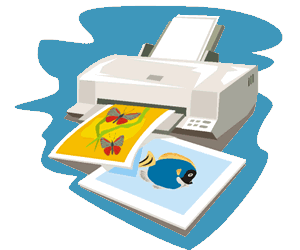SULFNBX.EXE HOAX VIRUS
![]()
|
|

|
SULFNBK.EXE
Warning
This particular email message is a hoax. The file that is mentioned in the hoax, however, Sulfnbk.exe, is a Microsoft Windows utility that is used to restore long file names.
If you have deleted the Sulfnbk.exe file from the C:\Windows\Command folder and want to know how to restore the file, see the How to restore the Sulfnbk.exe file section at the end of this document.
Translated English version:
Do
you believe that a friend of mine sent me an alert and the procedure
that we have to follow for the possible infection of SULFNBK.EXE.
And I had checked, just to make sure. An then... the file was there,
hidden even of McAfee and Norton, maybe waiting something to start
work.
Well, see bellow the procedure that I followed step by step, and
I found the file:
1.
Start/Find Folders. Type the file name: SULFNBK.EXE
2. If it find, open Windows Explorer, browse into the folder where
the file is and delete it. Do not click with left button on the
file and do not open it.
3. Just delete it
4. Mine was on Windows/Command
5. The virus from the person who gave the alert was on Windows/Config
Yes,
Norton and McAfee do not detect it.
We do not know if it makes some damage on the machine, but I think
that anybody will not want to test it to know, will it?
Folks, this is not fun, I deleted it from my computer.
And my definitions are updated.
Do the same, ok?
A new version of this hoax has additional text stating that the virus will activate on June 1st:
It
was brought to my attention yesterday that a virus is in circulation
via email. I looked for it and to my surprise I found it on mine.
..
Please follow the directions and remove it from yours TODAY!!!!!!!
No
Virus software can detect it. It will become active on June 1, 2001.
It might be too late by then. It wipes out all files and folders
on
the hard drive. This virus travels thru E-mail and migrates to the
'C:\windows\command' folder.
The
bad part is: You need to contact everyone you have sent ANY
E-mail to in the past few months. Many major companies have found
this virus on
their computers. Please help your friends !!!!!!!!
DO
NOT RELY ON YOUR ANTI-VIRUS SOFTWARE. McAFEE and NORTON CANNOT
DETECT IT BECAUSE IT DOES NOT BECOME A VIRUS UNTIL JUNE 1ST.
WHATEVER YOU DO, DO NOT OPEN THE FILE!!!
How
to restore the Sulfnbk.exe file
If you have deleted this file, restoration is optional. Sulfnbk.exe
is a Microsoft Windows utility that is used to restore long file
names. It is not needed for normal system operation. If you want
to restore it, there is more than one way to do this. See the information
that follows.
Windows
98
If you are using Windows Me, you can restore the file using the
System File Checker.
1.
Click Start and then click Run.
2. Type sfc and then press Enter.
3. Click "Extract one file from installation disk."
4. In the "Specify the system file you would like to restore"
box, type the following, and then click Start:
c:\windows\command\sulfnbk.exe
NOTE: If you installed Windows to a different location, make the appropriate substitution.
The Extract File dialog box appears.
5.
Next to the "Restore from" box click Browse, and browse
to the location of the Windows installation files. If they were
copied to the hard drive, this is, by default, C:\Windows\Options\Cabs.
You can also insert the Windows installation CD in the CD-ROM drive
and browse to that location.
6. Click OK and follow the prompts.
Windows 95 (or alternative method for Windows 98/Me)
If you are using Windows 95, you need to use the extract command.
This can also be used on Windows 98/Me.
1. Click Start, point to Find or Search, and then click Files or
Folders.
2. Make sure that "Look in" is set to (C:) and that Include
subfolders is checked.
3. In the "Named" or "Search for..." box, type:
precopy1
4.
Click Find Now or Search Now. If it does not exist on the hard drive,
then insert the Windows installation CD and repeat the search on
that drive.
5. When you find the file, write down the location of Precopy1,
for example, C:\Windows\Options\Cabs. This is your Source Path.
6. The general form of the Extract command is:
extract <Source Path>\precopy1.cab sulfnbk.exe /L c:\windows\command
So if the source path is C:\Windows\Options\Cabs, then the Extract command becomes:
extract c:\windows\options\cabs\precopy1.cab sulfnbk.exe /L c:\windows\command
NOTE: If you installed Windows to a different location, make the appropriate substitution.
7.
Click Start and then click Run.
8. Type the following, making the appropriate substitutions as previously
noted
extract <Source Path>\precopy1.cab sulfnbk.exe /L c:\windows\command
9. Click OK.
Please ignore any messages regarding this hoax and do not pass on messages. Passing on messages about the hoax only serves to further propagate it.
